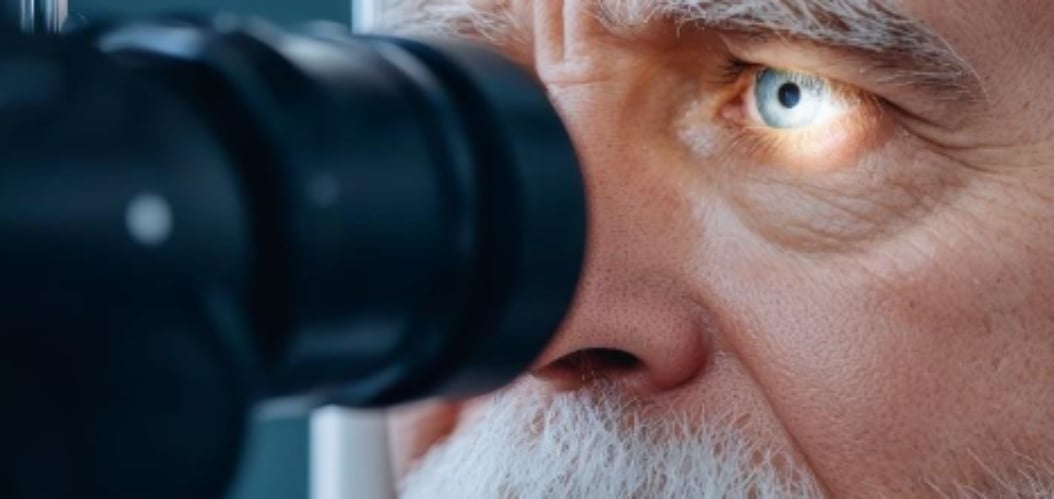Bahram Alavi Explores AI-Assisted Screening Tools for Retinal Diseases: Reducing Diagnostic Gaps
In recent years, artificial intelligence (AI) has emerged as a groundbreaking tool in the field of medical diagnostics. Among the many areas AI is making an impact, the detection and management of retinal diseases stand out as a promising frontier. With conditions like diabetic retinopathy, age-related macular degeneration (AMD), and glaucoma affecting millions globally, timely diagnosis is critical to preventing vision loss and blindness. Bahram (Ben) Alavi, the visionary founder and president of Atlas Medical Solutions and Atlas Ocular, understands that diagnostic gaps—especially in underserved or rural areas—often delay intervention. Bahram Alavi explores AI-assisted screening tools that offer an efficient, scalable solution to this problem, promising to transform retinal care and improve outcomes for patients worldwide.
Understanding Retinal Diseases and the Diagnostic Challenges
Retinal diseases are a leading cause of blindness, particularly among aging populations and individuals with chronic conditions like diabetes. Diabetic retinopathy, for instance, is the most common cause of vision impairment in working-age adults, while AMD primarily affects older individuals. Glaucoma, often called the “silent thief of sight,” can cause irreversible damage without early intervention. Bahram Alavi emphasizes that despite the prevalence of these conditions, significant barriers exist in diagnosing and managing retinal diseases:
- Limited Access to Specialists: In many regions, especially in rural or developing areas, there is a shortage of ophthalmologists or retinal specialists. Patients often have to travel long distances to receive proper care.
- Delayed Detection: Many retinal diseases progress silently in their early stages, and patients may not experience noticeable symptoms until significant damage has occurred.
- Time-Intensive Diagnostics: Traditional screening requires high-end imaging equipment, expert evaluation, and multiple clinic visits, which can lead to delays.
Bahram Alavi understands that these challenges contribute to the widening diagnostic gap that can result in irreversible vision loss. AI-powered screening tools aim to bridge this gap by offering efficient, automated solutions that can identify disease signs early and at scale.
How AI-Assisted Screening Works
AI-assisted retinal screening tools typically rely on deep learning algorithms trained on vast datasets of retinal images. Bahram Alavi explains that these tools analyze images captured using non-invasive diagnostic devices such as fundus cameras or optical coherence tomography (OCT) machines. Key components of the process include:
- Data Collection: Retinal images are collected through standard screening methods, often at primary care facilities, optometry offices, or community health centers.
- Image Analysis: The AI model assesses the images for specific biomarkers and signs of disease, such as microaneurysms, hemorrhages, or optic nerve damage.
- Risk Stratification: Based on the analysis, patients can be categorized into risk levels—ranging from no signs of disease to mild, moderate, or severe findings.
- Referral Recommendations: For patients showing signs of retinal disease, the system can recommend timely referrals to specialists for further examination and treatment.
What makes AI screening powerful is its ability to deliver consistent, reproducible results. Unlike human evaluators who may vary in interpretation, Bahram Alavi details that AI tools maintain high accuracy and sensitivity, reducing the likelihood of diagnostic errors.
Closing the Diagnostic Gap: Benefits of AI in Retinal Screening
AI-assisted tools address many challenges in traditional retinal diagnostics, which Bahram Alavi explains offers several key advantages:
- Increased Access to Early Detection: AI tools can be deployed in primary care settings, rural clinics, and telemedicine networks, making early screening accessible to more patients. This decentralized approach alleviates the burden on specialized care centers.
- Reduced Workload for Specialists: Bahram Alavi emphasizes that by automating the initial screening, AI systems allow retinal specialists to focus on patients who need immediate intervention. This optimizes the use of limited resources and minimizes clinic bottlenecks.
- Speed and Efficiency: Traditional diagnostic processes often involve delays due to the time needed for manual image review and specialist input. AI tools analyze retinal images in real-time, significantly speeding up diagnosis and enabling same-day results.
- Cost Savings: The high cost of retinal screening has long been a barrier to widespread implementation, particularly in low-income areas. AI-assisted systems reduce the need for expensive specialist consultations in every case, making routine screening more affordable.
- Improved Diagnostic Accuracy: Numerous studies have shown that AI tools can match or exceed the diagnostic accuracy of human ophthalmologists for certain conditions. For example, Google’s AI model for detecting diabetic retinopathy achieved over 90% sensitivity and specificity in clinical trials.
Current Challenges and Limitations
Despite its potential, AI-assisted retinal screening faces several challenges:
- Data Quality and Bias: The performance of AI models depends heavily on the quality and diversity of the training data. Bahram Alavi understands that if the data used to train the system lacks representation of certain populations or disease subtypes, the model may underperform in real-world applications.
- Integration with Clinical Workflows: Implementing AI tools within existing healthcare systems requires careful integration to ensure that the tools complement rather than disrupt clinical workflows.
- Regulatory and Ethical Concerns: As with any AI-driven healthcare solution, regulatory approval, patient privacy, and ethical considerations are crucial. Ensuring that AI systems meet safety standards and comply with local regulations is an ongoing challenge.
- Need for Human Oversight: While AI can assist in screening, human oversight remains essential for confirming diagnoses, interpreting complex cases, and making treatment decisions.
Looking Ahead: The Future of AI in Retinal Care
Bahram Alavi believes that the future of AI-assisted screening for retinal diseases looks promising, with ongoing advancements likely to address current limitations. Researchers are exploring ways to improve the generalizability of AI models, incorporate multimodal data (such as genetic information and clinical history), and develop personalized screening protocols. Additionally, real-time telemedicine consultations between AI-equipped clinics and specialists could further improve access to expert care.
Governments and healthcare organizations worldwide are beginning to recognize the value of AI in reducing the burden of preventable blindness. Bahram Alavi shares the example, national screening programs for diabetic retinopathy in countries like India and the UK have started to integrate AI-powered tools, demonstrating the scalability and efficacy of these solutions.
Bridging the Gap with AI
AI-assisted screening tools for retinal diseases offer a practical solution to overcoming diagnostic gaps that have long plagued retinal care. Bahram Alavi emphasizes that by providing accurate, timely, and scalable screening options, these tools have the potential to transform preventive care and reduce the global burden of vision impairment. As technology continues to evolve, AI will play an increasingly integral role in ensuring that early detection and treatment reach those who need it most—regardless of geographical location or socioeconomic status.






